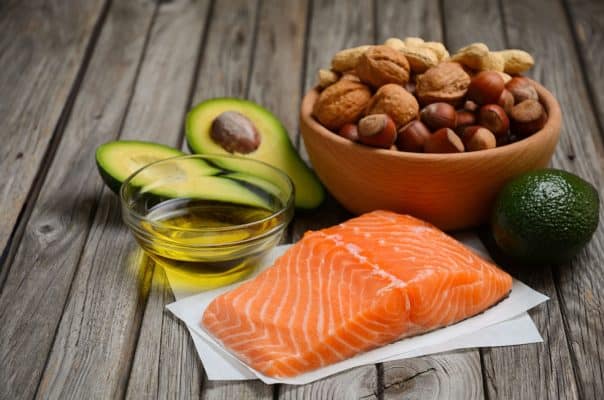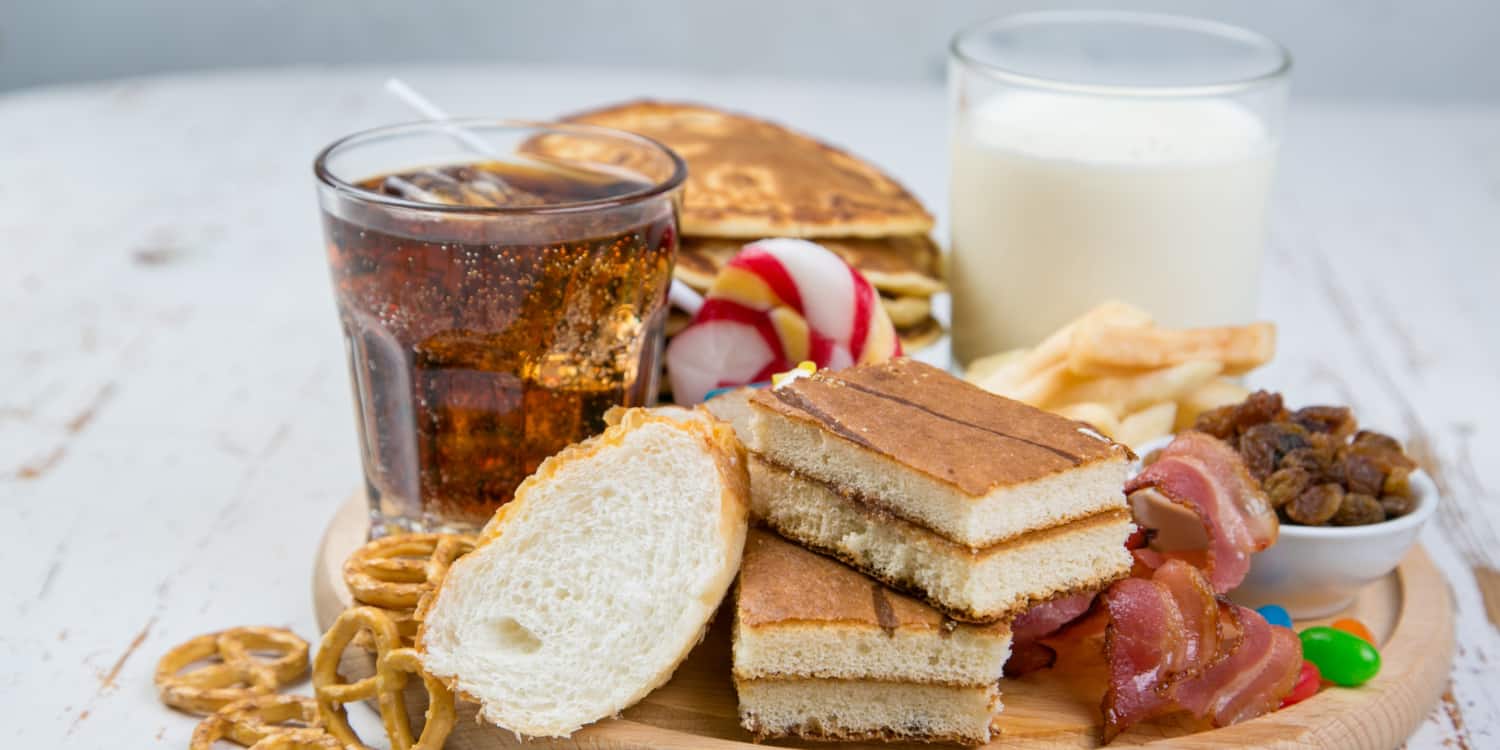If you are familiar with our previous articles, you know how important your diet can be for your skin and complexion. If you are new to our site, lets just say that the old saying “you are what you eat” might not be that far off from the truth.
Most of us know the basics of eating healthy, whether we implement this knowledge in our daily life or not. But when it comes to acne, sometimes things that we consider healthy, might actually be harmful. Did you know that garlic and apples are included on the list of foods that might cause you gut problems, which in turn might aggravate your gut-related acne? Well, I didn’t.
In this article we mention 5 foods that are linked to acne. I know, I know. You are tired of hearing what you can’t eat, right? Lucky for you, we also provide you with a list of skin-friendly substitutes. So take a pen and paper and start scribbling down your next grocery list!
Refined Carbohydrates
We can’t make a health related diet list without mentioning the recent worldwide enemy number 1. Many diets tell you to stay away from refined carbohydrates, we will not be different. But why you might ask?
It’s simple, people who frequently consume refined carbohydrates have been associated with a greater risk of developing acne. When I say refined carbohydrates, I mean foods such as sugary cereals, crackers, white bread, white rice, desserts made with white flour, pasta, rice noodles etc.
If we ingest these foods that are high in the glycemic index, refined carbohydrates are absorbed quickly into our bloodstream, which in turn rapidly raises our blood sugar levels. When our blood sugar levels rise, our insulin levels also rise to help shuttle all that blood sugar out of our bloodstream and into our cells.
Insulin makes androgen hormones more active and increases insulin-like growth factor 1 (IGF-1) which makes our skin cells grow faster and boosts sebum production. Hormones and acne, sound familiar? To make it simple, when you eat refined carbohydrates it might make your skin produce more oil and clog your pores, which makes the perfect environment for acne causing bacteria.
Substitutes
So what should you do if you don’t want to give up your daily breakfast toast? You can always switch your white bread to whole-grain. Just like you can switch your white rice to brown rice or wild rice. Try replacing high glycemic index foods with more whole grains, such as sweet potato, quinoa, brown rice, millet, barley, oats and farro.
Acne friendlier diet suggestions:
- White bread: whole grain bread
- White rice: brown rice or wild rice
- Instant cooking oats: rolled oats
- Potato: sweet potato
- Crackers: make your own from seeds like flax seeds or almond crackers
- Pasta: look for pasta made of brown rice or try soba noodles and shirataki noodles
- Love to bake? Ditch the white flour and try using almond flour, coconut flour or flax-seed meal instead.
In general a low-glycemic diet may reduce your acne since it eliminates spikes in your blood sugar. Favor low GI foods such as fresh vegetables, fresh fruits, beans and steel-cut oats. High fiber foods may also help to regulate insulin.

Sugar
This one needs its own chapter. We know its bad for us, it gives us pimples, it makes our clothes too small for us but still we crave it. We need it. But sugar makes our insulin spike, which we already mentioned is bad for our skin. Excess sugar in your diet might also make you develop insulin resistance. Sugar’s oxidative properties can also provoke acne and breakouts.
Foods high in sugar include white bread, candy, ice cream, sodas and sweeteners such as table sugar. You might think this one is easy, you will just change your Coke to a Coke zero, problem solved! Wrong. Unfortunately, I have to declare also artificial sweeteners as acne-enemies.
Artificial sweeteners can be found in a wide range of foods, from chewing gum to ice cream and sugar free candies. Artificial sweeteners are cheap, calorie free and taste just as sweet as sugar. Some of the most popular brands include xylitol, splenda, Acesulfame K, aspartame, cyclamate, erythritol, isomalt, maltitol, mannitol, saccharin and sorbitol.
Unfortunately, our bodies do not know how to use artificial sweeteners for energy or any biological processes. Instead it eliminates them through urine, feces or sweat. These chemicals leave your body through your skin, causing further damage. You may experience inflammation, pimples, acne breakouts and blocked pores.
Research also proves that artificial sweeteners have the power to disrupt our gut’s microbial inhabitants, which negatively affects our metabolism and blood sugar balance. This might in turn lead to skin issues such as acne and rosacea.
Substitutes
How to substitute sugar, you might ask. That is the billion dollar question. I guess it’s all about finding a balance between what is good for you and what you like.
I love chocolate. Preferably milk chocolate. But chocolate is high in sugar, so it has a high GI and milk chocolate also contains our next enemy, milk. So if I’m not able to quit chocolate all at once, I should at least change my milk chocolate to dark chocolate, the darker the better. At least this way it contains more antioxidants (good guys) and less milk. Baby steps.
Acne friendlier sweeteners:
- Small amounts of honey or stevia, the only natural sweetener available today
- For added flavor – try vanilla extract, cinnamon, turmeric or even fruit slices
So try step by step eliminating any excess added sugars from your diet, choose natural yogurts instead of flavoured ones, add honey to your tea instead of sugar, stevia to your coffee, add slices of fruit in a jug of water instead of opening a can of soda. You feel like watching a movie and need some candy – make a fruit bowl instead or try some unsalted nuts. It might not sound all that great, but your body will thank you later!

Dairy Products
Dairy has been in the headlines lately, we have been raised thinking that we need it but now it’s suggested that it’s bad for us. A controversial discussion between scientists and dairy producers. But what we do know, is that milk is known to increase insulin levels.
Cow’s milk also contains amino acids, which stimulate the liver to produce more IGF-1. Any alarm bells ringing yet?
Dairy products include milk, buttermilk, butter, yogurt, curd, cream, cheese and ice cream. Dairy cows are treated with artificial hormones to ensure their milk supply. Researchers suggest that the hormones in their milk can also interact with our own hormones, confusing our body’s endocrine system and signaling breakouts. Another theory is that the growth hormones already naturally in milk, aggravates your acne.
Milk also contains androgen hormones that stimulate the sebaceous glands, creating an oilier skin that is more prone to pore blockages and pimples. Even worse than regular milk is skimmed milk. It has a higher sugar content than whole milk and when it’s processed, whey proteins are added to give it a creamy consistency. Whey protein is pro-inflammatory and can lead to inflammation that can cause acne or rosacea.
Side Note: Whey protein powder has also been connected to acne so try substituting it with vegan versions, pea protein powder, hemp protein, pumpkin seed protein, brown rice protein or even nuts!
Substitutes
Luckily we live in a time where the shelves are filled with plant-based milk products. You can choose between almond milk, coconut milk, hemp milk, cashew milk, hazelnut milk, brazil nut milk, oat milk, flax milk or rice milk. Note that we did not mention soy milk here, the jury is still out on that one.
These plant-based milks do not share the same properties that make cow’s milk bad for acne, just remember to choose the unsweetened versions. You can use these milks in the exact same way as regular milk,i.e. in your coffee, smoothies, baked goods or desserts. They tend to have less calories, more calcium, and sometimes even more protein. What’s not to love!
Yogurt, although not as bad as milk, can be substituted with almond yogurt or oat based alternatives. When baking, butter can be replaced with coconut oil or olive oil. Although coconut oil is slightly higher in calories and saturated fats, it won’t negatively affect the texture of your baked goods. You can also try mashed avocado, but then you need to increase the amount of wet ingredients.
Instead of traditional ice cream, you can try ice cream made of nut milks, such as coconuts, almonds or cashews. Dairy-free fruit based sorbets could also be a good alternative, but be sure to check the sugar content in all of them!
Other dairy substitutes:
- Cheese – can be replaced with plant-based version of soft cream cheese, you can soak cashew nuts overnight and bend them with a bit of nut milk and lemon juice or for a chewier consistency you can try crumbled tofu
- Whipped cream- try using canned coconut milk, first refrigerate it and scoop out just the solid parts. Whip the solid parts with vanilla until it’s fluffy, just like when you make regular whipped cream
- Sour cream – you can make your DIY version of it with some cashews and apple cider vinegar or you can try unsweetened coconut yogurt.
Fast Food
Although not strictly its own food group, due to its immense popularity, fast foods deserve a mention here. In case you didn’t know, high-fat diets have been associated with increased risk of developing acne. Researchers propose that it might affect gene expression and alter hormone levels in a way that’s beneficial for the development of acne.
Eating fatty foods, can release pro-inflammatory cytokines in the blood, which increase inflammation in the skin, making it red and angry.
Common fast food ingredients include refined carbohydrates, saturated fats and sugar, which are all linked to acne development and make your body struggle in order to control the spiky sugar levels. Examples of fast food items are burgers, nuggets, hot dogs, french fries, sodas and milk shakes.
Substitutes
Don’t put your foot in McDonald’s. Just kidding. But seriously, why not try to make your own burgers, using ground chicken or turkey. You can use unsweetened coconut yogurt instead of mayonnaise and add a lot of vegetables. You can use dark-seeded bread or whole wheat instead of the white processed ones.
French fries can be made out of sweet potatoes and soft beverages can be replaced with freshly squeezed juice or water flavored with cucumber, lemon or fruit, dessert can be a smoothie instead of milkshake or a homemade sorbet or frozen coconut yogurt.
If you feel like eating out, skip the fried, breaded, crispy, buttered versions and substitute them with steamed, boiled, grilled or poached versions!
Foods Rich in Omega 6 Fatty Acids
Diets containing large amounts of omega-6 fatty acids have been linked to increased levels of inflammation and therefore also acne. The problem here is not as much the omega-6 fatty acids per se, as it is the imbalance between the omega-6 and omega-3 fatty acids. This imbalance might push the body into an inflammatory state.
Omega-3 fats in turn are anti-inflammatory and may help prevent inflammation, improve acne and also help with other skin disorders. Examples of omega-6 fatty acids are oils from corn, safflower, sunflower, grape seed, soy, peanut and mayonnaise or salad dressings.
Substitutes
This time the solution is not avoiding one thing, instead it’s increasing your intake of omega-3 fatty acids, therefore improving the balance between the two fatty acids.
Research has found that people increasing they omega-3 intake have seen a positive effect on their skin and acne. Inflammatory factors have also been decreased trough a diet rich in fish and seafood.

A key source of omega-3 fatty acids is fish oil. Oily fish are rich in nutrients, have a low GI and are known to be good for your skin. Salmon, sardines and tuna are all good choices.
Other sources of omega-3 fatty acids are walnuts, hazelnuts, chia seeds and flax seeds (crushed). Olive oil is also rich in omega-3 as well as sesame seeds, avocados, kale, spinach, wheat germ oil, and mustard greens.
To give you an idea of the quantity needed, you can daily take four tablespoons of flax-seed oil, which will be sufficient. You can add this oil to your smoothies, juice,cereal, soup or just about any liquids you consume.
Bonus tip – Alcohol
Alcohol is bad for your skin, there is no discussion. Alcohol is a diuretic and dehydrates your body and your skin. Having dry skin means that your pH will be out of balance, creating overproduction of sebum and clogging your pores.
Drinking too much alcohol is also linked to poor zinc absorption and excessive alcohol use can put you at risk for zinc deficiency. Read more on the connection between zinc and acne here.
Our favorite umbrella drinks, such as mojitos, margaritas and most other cocktails are also packed with sugar. If you really, really need a drink, your safest choice would be a glass of red wine. Red wine contains resveratrol, which is friendly for most skin types, including acne prone skin.
In a nutshell
You got this far and now you still feel confused about what you can eat and what not? Let’s repeat some important takeaways:
- Substitute white bread, white rice, pasta, potato to the whole grain version, dark version or sweet potato
- Substitute dairy products with plant-based alternatives, there is a wide variety but make sure that you stick to the unsweetened ones
- Stay away from added sugars and artificial sweeteners, opt for honey, stevia, cinnamon or vanilla extract. Remember that the strangest things can have added sugars in them!
- Don’t eat fast food, it’s greasy and unhealthy – instead try a healthier DIY version of it!
- Make sure to have a diet rich in salmon, tuna, sardines, olive oil, hazel nuts, avocados and spinach
- Don’t drink alcohol, but if you do – choose red wine!
Remember that each case of acne is different, your friend might benefit from switching from cow’s milk to almond milk, while you see no change in your skin. It all depends on the root cause behind your acne and your acne type. If you want to read more about food and acne with regards to acne types, you can have a look at our article the Ultimate list of foods that cause acne.




Hi, I just wonder why you count xylitol as artiricial sweetener?
I swaped sugar for xylitol about 2 years ago and did not noticed it to have same bad influence on my skin and wellbeing as sugar have. I have choosen xylitol after my dietician recomended it to me as it is natural (it’s birch sugar) and low glycemic index. Lower than honey and sugar.
Can you please explain why it is noted in here as the one to avoid?
Thank you for that question. Xylitol is considered as one of the sugar alcohols and also an artificial sweetener. I must agree with you that there are some benefits, like it doesn’t raise your blood sugar and spike your insulin levels. However, sugar alcohols can pull water into your intestine or get fermented by gut bacteria. Since they aren’t absorbed well by the body, they can cause an allergic reaction for those who have a sensitivity to it. In addition to this, it doesn’t provide vitamins and minerals. It’s great that it has been helping you and as long as it is recommended by a healthcare professional.